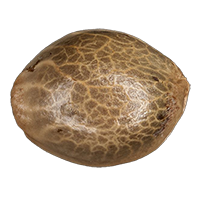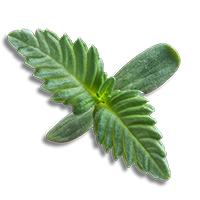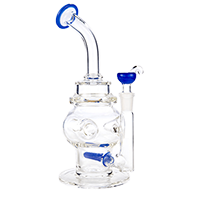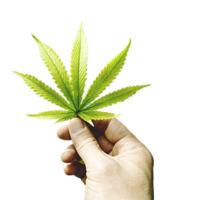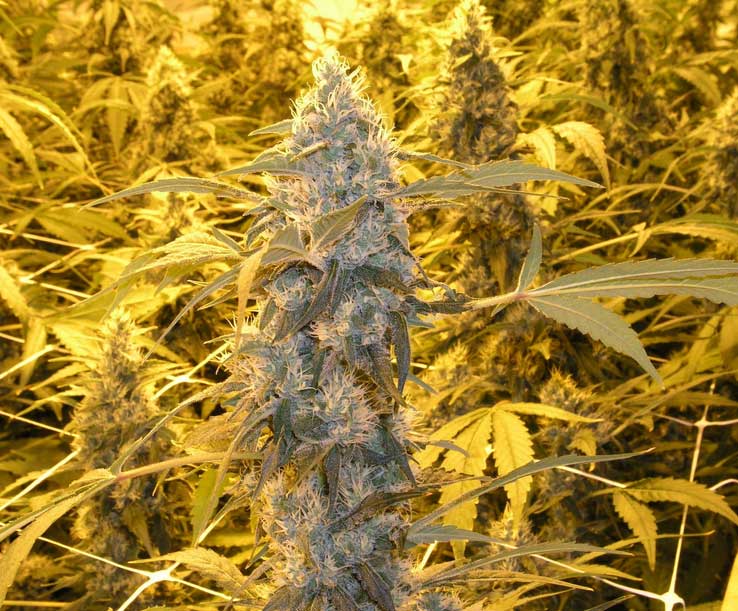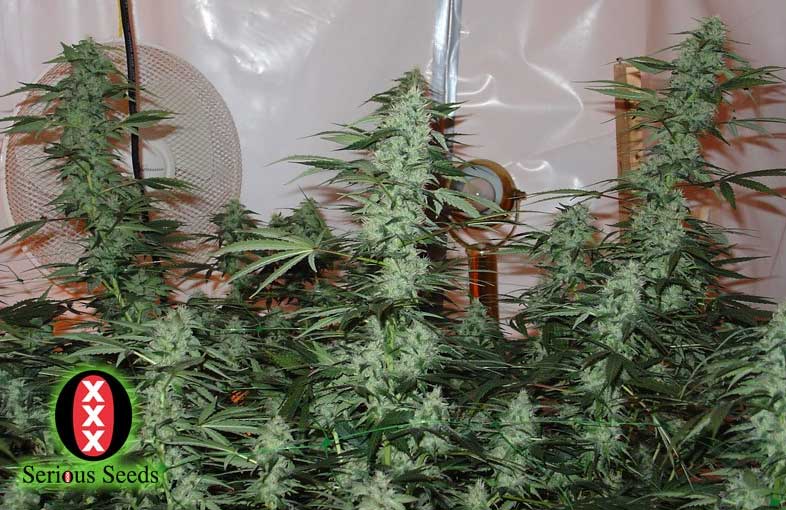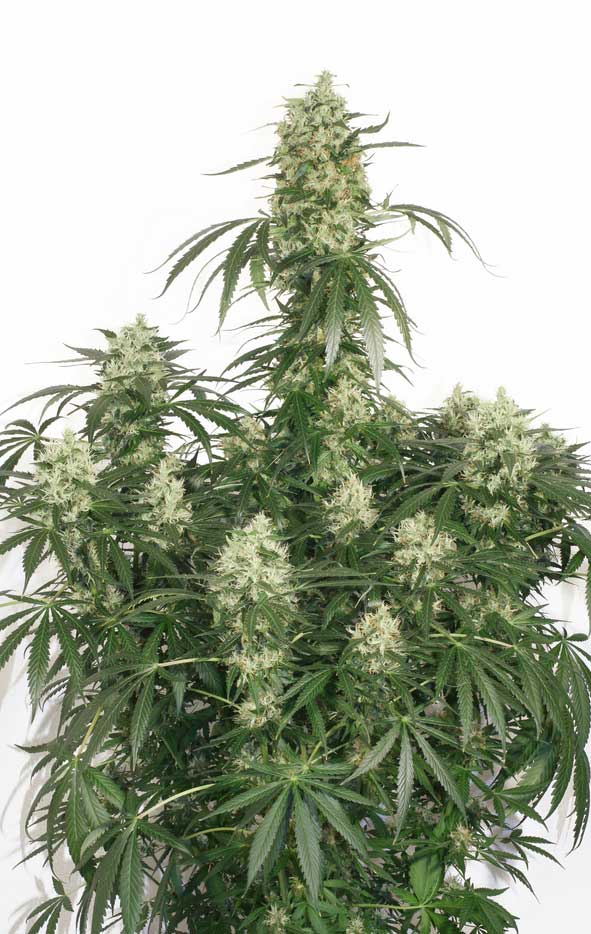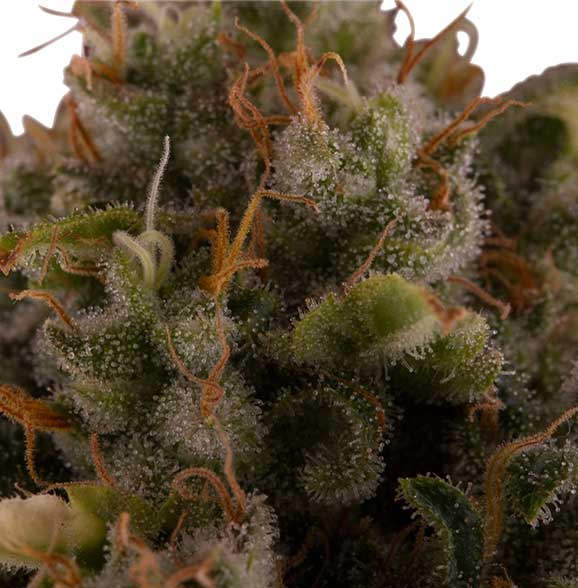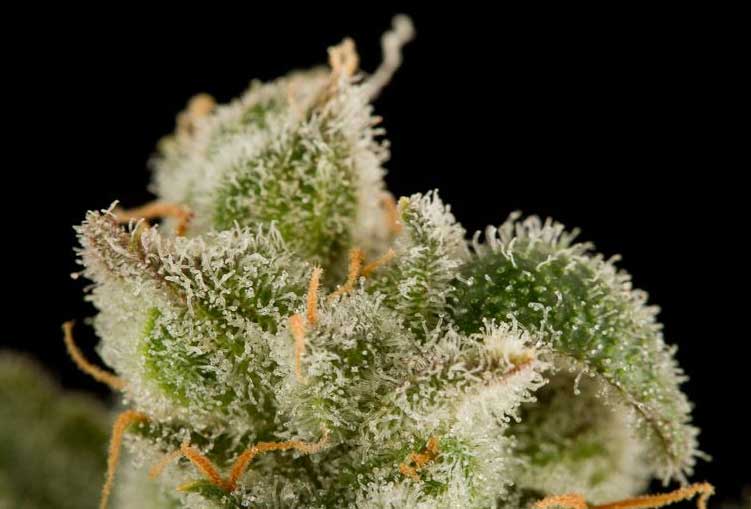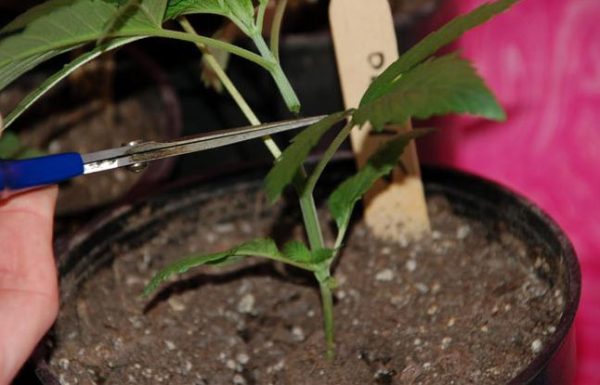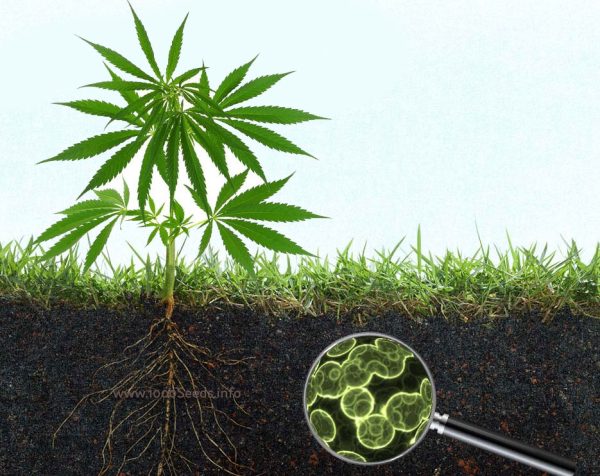5 Methods to Increase Yields in Indoor Growing

Just about every grower wants a big yield for little money, time and effort. We show you 5 simple ways to increase indoor yields, regardless of the strain you grow.
First, of course, the genetics of the plants have a big impact on the eventual harvest and the end result. Therefore, you should of course use very good quality cannabis seeds.
Before thinking about increased yields, you need to make sure that you understand the basics of growing, use the necessary equipment, use it correctly and deal with any problems that arise.
Once you have mastered successful growing, it makes sense to use the following 5 strategies to get the most and best yields:
1.) Increasing the light intensity/increasing the luminous intensity

Basically: More light = more buds, bigger flowers = more yield.
The most effective way to achieve bigger yields and thicker buds is to increase the light intensity. It goes without saying that the appropriate light spectra and plant lamps (NDLs or LEDs) are used in the individual development phases of the plant (growth/flowering). More on the subject correct lighting of cannabis plants you find here.
By adding CO2, plants can convert even more light and use it for themselves. Light is food for your plants. The plant can convert light into energy, i.e. photosynthesis, which is a fundamental prerequisite for the formation of flowers and growth.
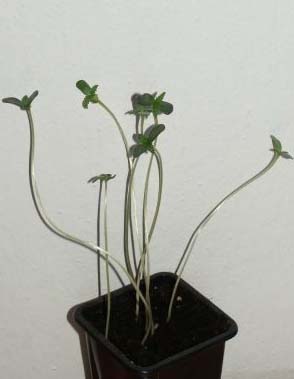 After the seeds have germinated or the cuttings have rooted, one of the most important tasks is to ensure that the plants get enough light. A sufficiently high light intensity is required from the start to avoid plants becoming curly or young plantlets starting to spar and possibly toppling over. Seedlings that stretch for light like this have too little light. This strong stretching due to too little light is not good and leads to the plants becoming gangly and very tall later on, as well as producing a lower yield at the same time.
After the seeds have germinated or the cuttings have rooted, one of the most important tasks is to ensure that the plants get enough light. A sufficiently high light intensity is required from the start to avoid plants becoming curly or young plantlets starting to spar and possibly toppling over. Seedlings that stretch for light like this have too little light. This strong stretching due to too little light is not good and leads to the plants becoming gangly and very tall later on, as well as producing a lower yield at the same time.
With a higher light intensity, a larger number of buds is produced: a simple way to effectively and definitively increase yields. Of course, the best and highest results are achieved when all the buds are optimally illuminated and the available space is fully utilised. To achieve this, it makes sense that all plants in the growroom are about the same height and have a relatively homogeneous growth structure. Flowers that do not get enough light will remain small.
With certain plant training methods, it is possible to manipulate the cannabis plants and thus increase their yields. In order to end up with absolutely high-quality marijuana that is also suitable for medicinal use, care should be taken to ensure that temperatures in the grow room are not too high, especially during the flowering phase. Too high temperatures cause terpenoids in the cannabis to burn and lose their medicinal effect as well as their smell and aroma.
Too much light?
No indoor grower is likely to succeed in providing too much light for their plant any time soon. Cannabis plants can use an incredible amount of light naturally. It is only necessary to keep the right distance to the plant lamp (see Lighting cannabis plants) in order to avoid burns or even asparagus.
- Energy-saving lamps and fluorescent tubes, which can be used during the growing phase, provide only a relatively weak light. The plants should be placed very close to the lamp so that they get as much light as possible. Burning is less of a risk because these types of lamps do not get hot, unlike NDLs. If you want large yields with corresponding potency, you should only use sodium damper lamps or power LEDs during flowering. With all other types of light and lamps, you will only achieve a moderate yield and also low potency.
- To avoid heat build-up in the plants and to ensure that enough fresh oxygen and CO2 gets into the grow box, a sufficiently strong ventilation system must be used as standard, especially of course if a sodium vapour lamp is used, which generates a relatively high amount of heat. Even when using all other types of suitable plant lights, ventilation with a sufficiently strong fan is indispensable in the indoor area, so that the cannabis plants get enough fresh air (air exchange) and water in the grow box is always removed, which would otherwise lead to mould.
Theoretically, it would be possible for too high a light intensity to burn the plants, even if the temperatures are not too high at all. But since you don't reach such high light intensities in normal growing anyway, we don't need to worry about that.
When you have reached the ultimate maximum of light that your plants can use, there is one more trick to further increase yields. You can allow your plants to use even more of that light (and thus get a higher yield) if you increase the CO2 level in the plant room during flowering. So if light is like food for plants, then increased CO2 provides a way for more of that food to be taken up than would normally be the case. This makes sense mainly in plants where there is a high light intensity (1000W and more or high-power LEDs).
 CO2 in the growroom
CO2 in the growroom
CO2 can therefore be used to indirectly increase yields when the light intensity has already been fully exploited, i.e. at a very high level. One thing to bear in mind with CO2 systems that produce very high CO2 levels: CO2 is dangerous to humans at the high level aimed at, so you have to be careful and protect yourself sufficiently. In addition, there are other and simpler possibilities for CO2 enrichment that are easy to operate and relatively inexpensive to purchase, e.g. the CO2 Boost, with bucket and pump.
Of course, the ideal illumination of all buds plays a decisive role in the yield that will be achieved later. There are various ways to optimise this illumination:
2). strong and uniform light coverage through the use of netting, tying down, pruning.
The basic idea behind the use of netting, tying down or pruning is that this achieves full utilisation of the available growing space and at the same time ensures optimal lighting of all flowers. This inevitably leads to higher yields. By manipulating cannabis plants using various techniques, very good results can be achieved for experienced growers. So-called "low-stress training" (LST) manually forces the plant to grow flat instead of tall and thin. This is usually done by tying down and bending.
Here is an example of a cannabis plant that grows short and wide due to LST:
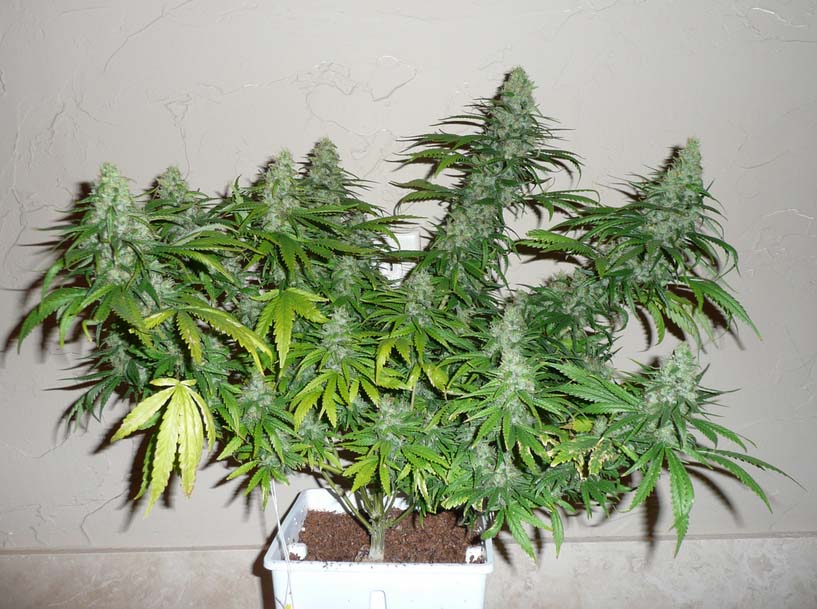
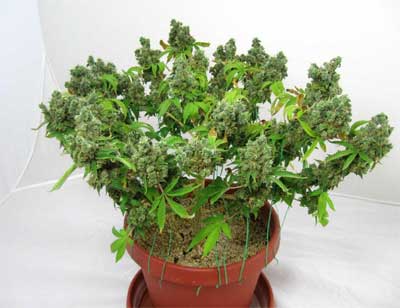
Although these plants are only short, as a whole they form a large amount of leaf surface that generates energy from the light like solar collectors. Due to the flat wide shape, the entire plant is perfectly illuminated, a much larger part of the plant is thus directly irradiated with light. this naturally leads to a higher yielding crop and larger buds.
Using a net stretched over the plants can also force them to grow flat, resulting in higher yields. This method is called ScrOG (Screen of Green).
Here is an example of a SCROG cultivation:
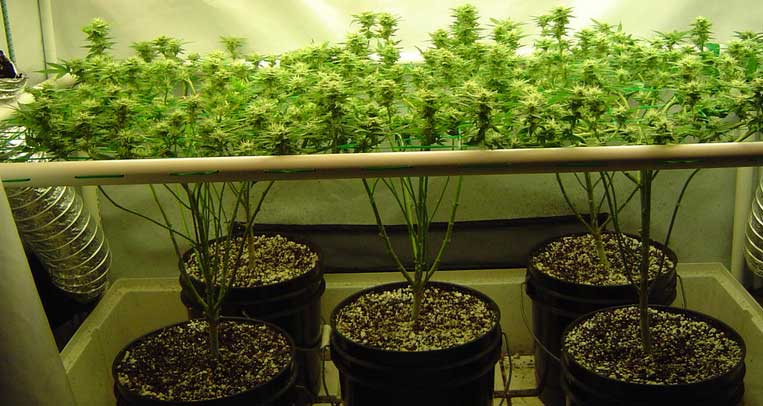
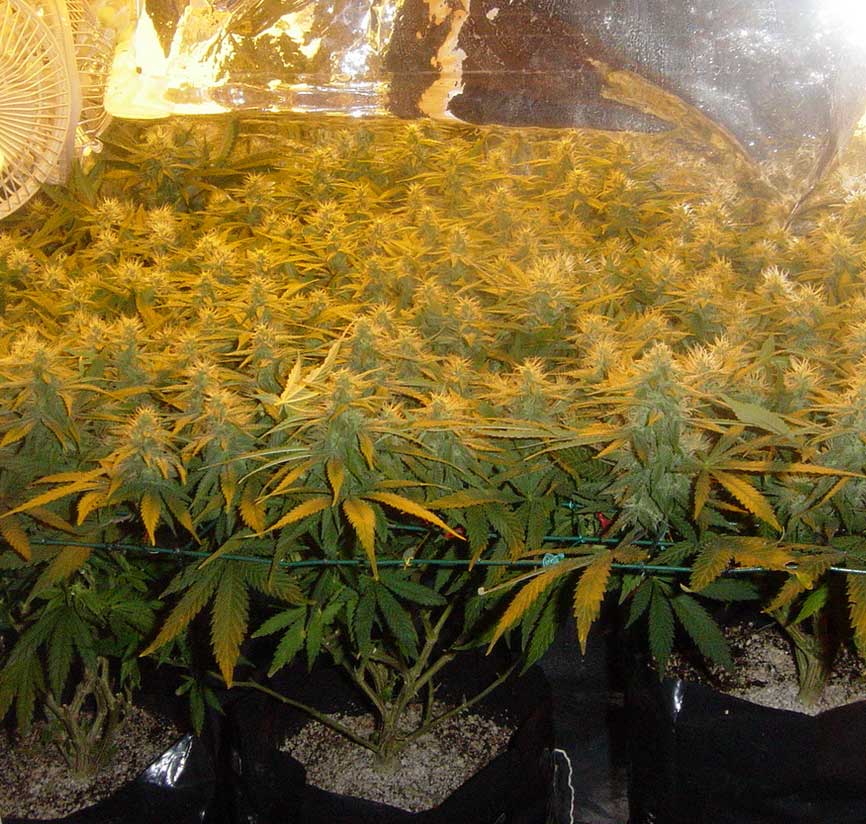
In SCROG cultivation, the marijuana plants are trussed and trained at the vegetative stage and at the beginning of flowering. Read more about scrog cultivation here.
Another popular and easy-to-learn plant training method that increases yields is known as "Supercropping.” Super-cropping can be used to manipulate almost any plant that, for example, is getting too tall and needs to grow more in width. More about Super Cropping you will find here.
Pruning the plant:
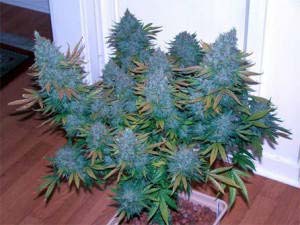
Topping involves pruning the topmost main shoot of the plant to achieve bushier growth. All the energy no longer goes into the headbud alone, but is distributed to the side branches and countless flowers are formed. With many varieties, this results in a higher yield, with others it remains the same whether a strong main shoot develops or, through pruning, countless flowers instead. Still other varieties react less well to topping. It is best to rely on the experience of other growers or to test yourself how individual varieties react.
Fimming is also a special method to achieve higher yields by pruning. You can read more about it here: Fimming - pruning for advanced growers.
Defoliation of the cannabis plant (removing many leaves) can injure or even kill the plant if done incorrectly. It is advisable to use this method only with proper experience and rather use other training methods first that stress the plant less. Some cannabis strains do not like it at all when healthy leaves are removed, some strains react very well to it.
3.) The right intake of nutrients (but do not overdo it)
Cannabis plants need nutrients to grow. When fertilising, one should always follow the fertilisation scheme clearly and stick to the fertilisation system of one manufacturer. Many growers tend to over-fertilise their plants, thinking that more is better, or they mix up fertilisers from different fertiliser systems. Sometimes the most diverse additives are given in a colourful jumble without understanding what the plant actually needs and how the individual agents work together. This, of course, makes little sense. As a grower, it is important to know the language of your plants and to be able to correctly interpret signs of disease, needs or changes.
If cannabis plants receive an excessive amount of nutrients, overfertilisation will occur: Growers often see fertiliser as food for the plant and intuitively give it more "food" because they hope to get bigger flowers. Effectively, however, light is the plant's food. From the light, the plant makes the energy it needs for its development (flowering and growth). The nutrients are a kind of little helpers for the plant, which it needs for its photosynthesis process. But it is important to understand that too much of it does more harm than good. The best successes and highest yields are achieved by growers who avoid both under- and over-fertilisation, keeping everything exactly in balance, rather than those who use the most fertiliser. With some cannabis strains, it is even advisable to stay below the manufacturer's specifications. One should keep in mind that different cannabis strains often have different nutrient needs. Therefore, monitoring the leaves and the plants for change is enormously important.
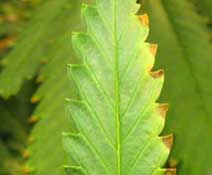
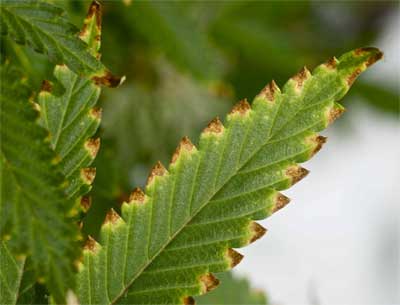
above: Over-fertilisation in cannabis (first signs)
During flowering and especially in the final stages of flowering, it is quite normal for the cannabis plant to get yellow leaves or drop leaves most of the time. Some growers react to this by increasing the amount of nutrients and giving more nitrogen. However, this is quite wrong. Too much nitrogen in the final phase of flowering can actually hinder the formation of flowers.
No fertiliser should be added to the water during the last 2 weeks before harvesting. On the one hand, for health and taste reasons, and on the other hand, because the plant stops putting its energy into the growth and care of the leaves and concentrates instead on the formation of fat buds. So it is doubly good to stop fertilising 2 weeks before harvest. This reduction in the total nutrient content leads to higher yields than if you continue to give nutrients until the end.
- Extra tip from Juan for growing on soil: adding a tablespoon of molasses (liquid brown sugar) to the irrigation water at the end of the flowering phase can increase the weight of the buds and help to intensify and improve the flavour of the flowers.
This is particularly effective when using organic (biological) fertilisers because the addition of molasses simultaneously promotes and stimulates the microbes in the soil. From the 2nd half of flowering, 1-2 tablespoons of molasses per 4L can be added to the irrigation water each time. However, this is not recommended for hydroponics.
4). Temperature (and humidity) control
Good environmental factors are crucial for the health of your plants and for their ultimate potency and yields. If the temperature and humidity are too high or too low for the plants, your plants will not grow properly and the flowers will not develop properly, no matter what else you do!
Too high temperatures in the flowering phase can reduce the potency and flavour of the buds and cause cannaninoids and terpenes to degrade. Controlling the temperature and humidity can actually increase the flavour and potency of marijuana.
5.) Wait for the right time to harvest.
For most cannabis strains, there is a 2-3 week window in which they can be harvested. However, if growers harvest before this window, it can significantly reduce yields and potency. By allowing the flower to fully ripen, you get maximum yield. Flowers can gain up to 25% in size in the last 2-3 weeks before harvest. The harvesting time (see correct harvesting time) can also be used to control and achieve the effects you want. If harvested earlier, you get grass that is more suitable for daytime and stimulates, if harvested later, the flowers have more of a couch-lock effect and relax.
Genetics is the key to potency and high yields
With the high quality seeds from our long established seed banks, you get the genetics you need to get big yields. Investing in a high-yielding strain like the ones you'll find here can be one of the best ways to get really high and potent yields with flavour and intense effects.
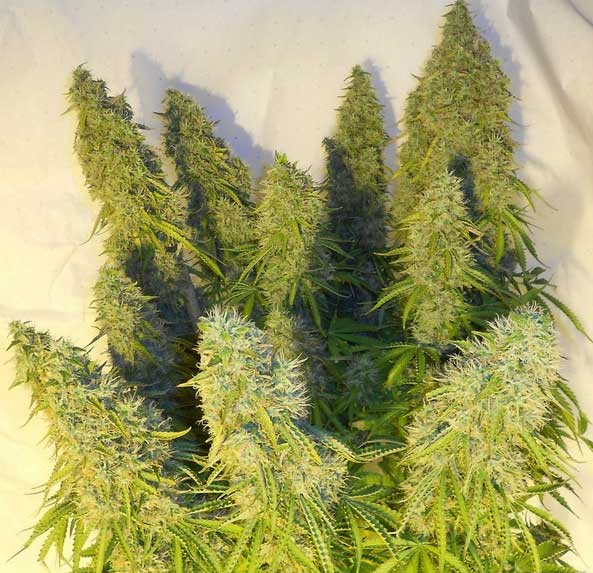
Inthe following, we would like to introduce you to 5 very high-yielding varieties:
Wonder Woman surprises with very high yields. She is a forgiving variety that is easy to grow and responds well to topping, LST or other training methods. Wonder Woman produces fat flowers and has a relatively high nutrient consumption. We were able to achieve huge yields with her, which had a very relaxing and intense effect
AK-47 by Serious Seeds is one of the most famous cannabis strains that has won numerous awards and Cannabis Cup victories. AK-47 has an extremely strong smell that smells sweet and sour, sometimes almost with a hint of citrus. It has an incredibly strong, potent, clear as well as lasting high. This strain is relatively expensive and is therefore especially recommended for growing mother plants. It is an extremely stable strain from a renowned breeder that reliably delivers equally good results. Ak 47 is easy to grow and gets medium height. At the same time, she delivers extremely high yields with a relatively short flowering time (9-11 weeks) for a sativa-dominant variety. Its flowers shine with trichomes.
The Ultimate (by Dutch Passion)
It is called "The Ultimate" because it has one of the highest yields cannabis growers have ever experienced, while combining the highest quality. The plants grow to 60-75cm tall and produce dense and fluffy buds that are highly resistant to mould. Ultimate is a true yield monster, with body-toned yet trance-like effects.
This strain responds very well to super-cropping and is excellent as a SCROG.
Royal Moby (by Royal Queen Seeds)
Due to its sativa dominance, it becomes a large and vigorous plant during flowering. Indoors it grows up to 2m tall and outdoors it reaches a height of up to 3m. Royal Moby has a typical Sativa growth with long side branches covered with countless flowers. Due to its beautiful size, it also produces a correspondingly abundant yield of 600g and more per m² indoors and even up to 1500g per plant outdoors.
The Royal Moby is a real power plant and therefore needs a lot of nutrients to develop ideally. Outdoors it needs a lot of sun. The only indica characteristic of this strain is its short flowering time of 9-10 weeks.
With her Haze and White Widow parents, this cannabis strain was bound to excel. She induces an extreme, long-lasting and potent high with a THC content of a convincing 20%, which is physically relaxing and at the same time induces a pleasant cerebral high with a psychedelic component.
She delivers massive yields within only a short time due to her Skunk genes. Blue Thai is characterised by its strong resistance to mould, its enormous yield and its beautiful blue-purple shimmering buds. The buds change colour especially when the temperatures get cooler at night. Then this strain turns into a beauty that delights every grower.
Blue Thai produces extremely resinous and crystal-covered buds with a THC content of over 20% and a fruity blueberry aroma within only 60 days of flowering. Outdoors, Blue Thai can easily reach heights of 3m and more and spoils the grower with yields of up to 800g/plant outdoors and 600g/m² indoors. Indoors, it should not be allowed to grow too tall before flowering, as it can get very tall indeed.
She is excellent for scrog growing and responds well to a variety of training mehtodes.
"The most productive cannabis plants will be the ones you put the most knowledge and love into.
Your Juan


